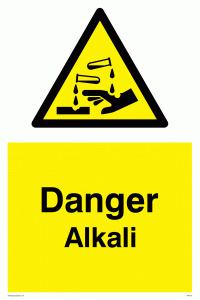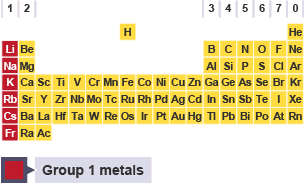 | ||
Characteristic of the compounds of the alkali metals chemistry 11th iit jee main adv askiitians
In chemistry, an alkali (/ˈælkəlaɪ/; from Arabic: al-qaly القلي, القالي , “ashes of the saltwort”) is a basic, ionic salt of an alkali metal or alkaline earth metal chemical element. An alkali also can be defined as a base that dissolves in water. A solution of a soluble base has a pH greater than 7.0. The adjective alkaline is commonly, and alkalescent less often, used in English as a synonym for basic, especially for bases soluble in water. This broad use of the term is likely to have come about because alkalis were the first bases known to obey the Arrhenius definition of a base, and they are still among the most common bases.
Contents
- Characteristic of the compounds of the alkali metals chemistry 11th iit jee main adv askiitians
- Alkali metals 13 compounds of sodium and nitrogen sodium azide
- Etymology
- Common properties
- Difference between alkali and base
- Alkali salts
- Alkaline soil
- Alkali lakes
- References

Alkali metals 13 compounds of sodium and nitrogen sodium azide
Etymology

The word "alkali" is derived from Arabic al qalīy (or alkali), meaning the calcined ashes (see calcination), referring to the original source of alkaline substances. A water-extract of burned plant ashes, called potash and composed mostly of potassium carbonate, was mildly basic. After heating this substance with calcium hydroxide (slaked lime), a far more strongly basic substance known as caustic potash (potassium hydroxide) was produced. Caustic potash was traditionally used in conjunction with animal fats to produce soft soaps, one of the caustic processes that rendered soaps from fats in the process of saponification, one known since antiquity. Plant potash lent the name to the element potassium, which was first derived from caustic potash, and also gave potassium its chemical symbol K (from the German name Kalium), which ultimately derived from alkali.
Common properties

Alkalis are all Arrhenius bases, ones which form hydroxide ions (OH−) when dissolved in water. Common properties of alkaline aqueous solutions include:

Difference between alkali and base

The terms "base" and "alkali" are often used interchangeably, particularly outside of the context of chemistry and chemical engineering.
There are various more specific definitions for the concept of an alkali. Alkalis are usually defined as a subset of the bases. One of two subsets is commonly chosen.
The second subset of bases is also called an "Arrhenius base".
Alkali salts
Alkali salts are soluble hydroxides of alkali metals and alkaline earth metals, of which common examples are:
Alkaline soil
Soils with pH values that are higher than 7.3 are usually defined as being alkaline. These soils can occur naturally, due to the presence of alkali salts. Although many plants do prefer slightly basic soil (including vegetables like cabbage and fodder like buffalograss), most plants prefer a mildly acidic soil (with pHs between 6.0 and 6.8), and alkaline soils can cause problems.
Alkali lakes
In alkali lakes (also called soda lakes), evaporation concentrates the naturally occurring carbonate salts, giving rise to an alkalic and often saline lake.
Examples of alkali lakes:
